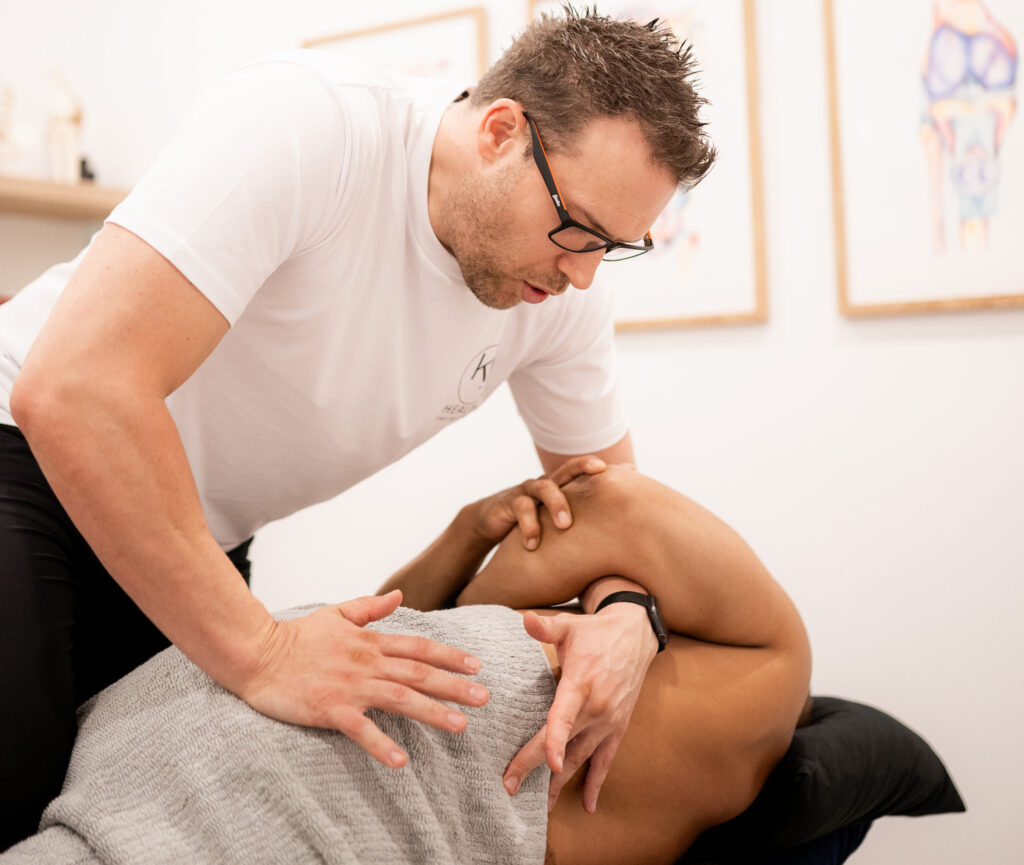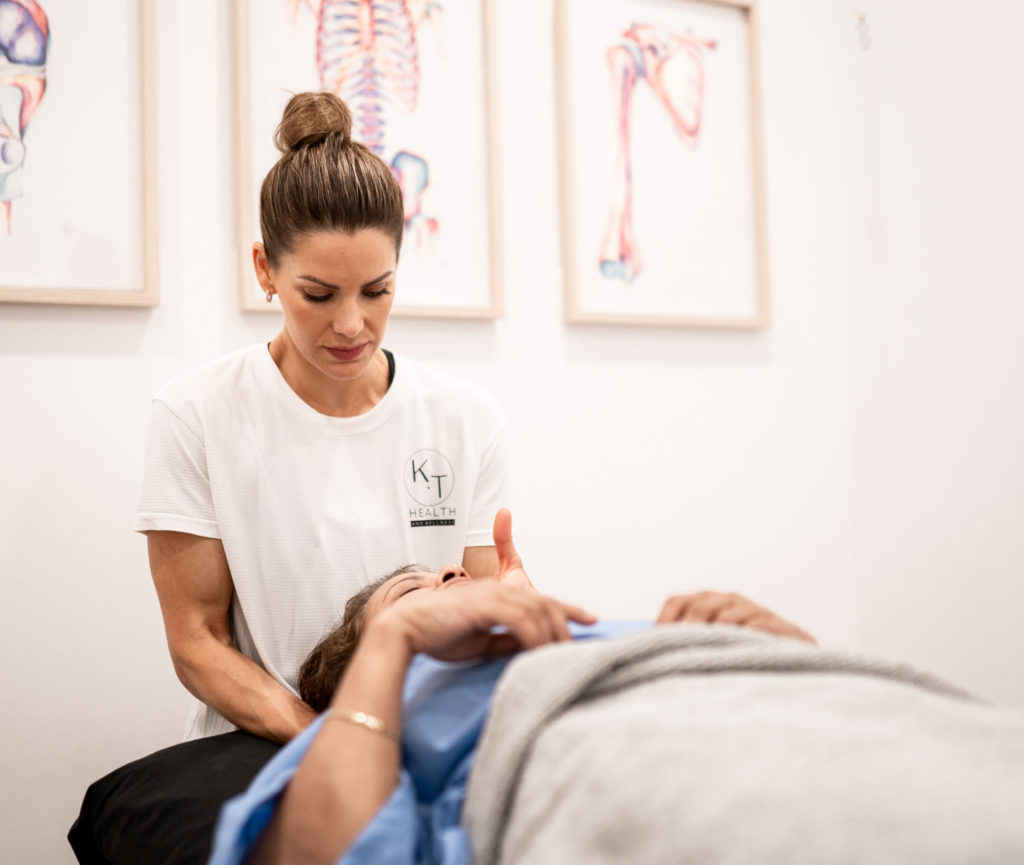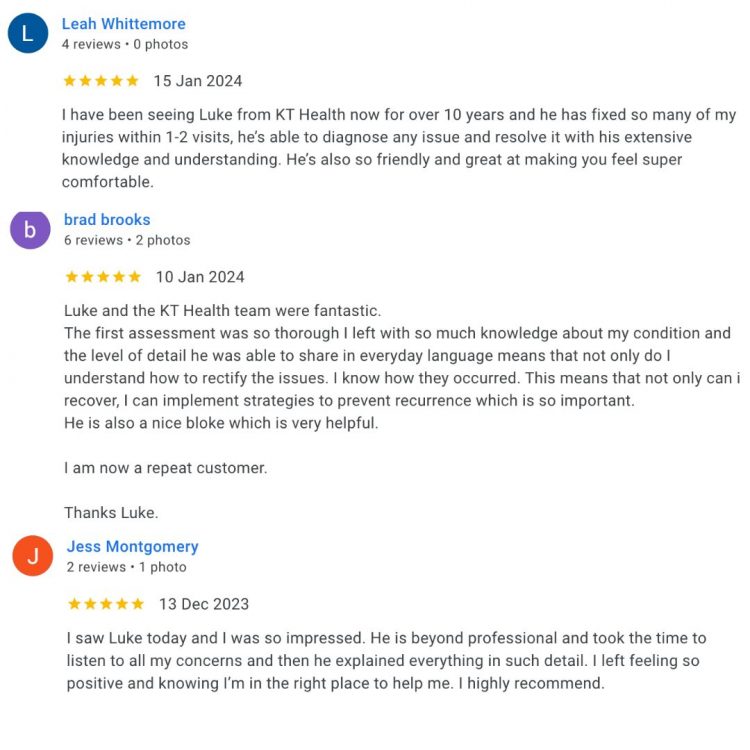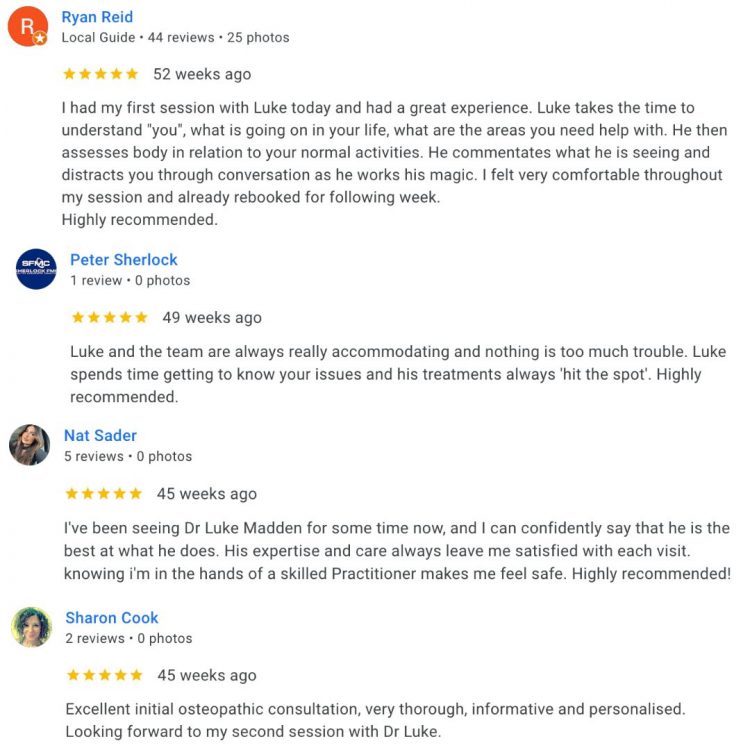Everything You Need to Know About a Quadriceps Contusion
What is a Quadriceps Contusion?
A quadriceps contusion is a bruise to the thigh muscle, usually caused by a direct blow to the front of the thigh. It leads to bleeding and swelling within the muscle, causing pain, tightness, and difficulty moving the leg. It’s especially common in contact sports like football, rugby, basketball, and martial arts.
An analogy…
Think of the quadriceps like a sponge. If you hit it hard with a hammer, the inside bruises and swells, even though the skin might not break. That’s what happens in a contusion, the muscle is squashed and bleeds internally.
What are other names that a quadriceps contusion can be called?
Corked Thigh, Quadriceps Bruise, Corky, Quadriceps Haematoma, Charley Horse, Dead Leg
What causes a quadriceps contusion?
The quadriceps muscle group sits on the front of the thigh and helps to straighten the knee. A contusion happens when a direct impact (like a knee or hard object) crushes the muscle against the femur (thigh bone). This causes bleeding inside the muscle tissue, leading to inflammation, swelling, and pain. Severe cases can lead to myositis ossificans if not managed properly.
What are the signs and symptoms of a quadriceps contusion?
- Sudden pain at the front of the thigh after a knock or tackle
- Swelling and tenderness in the muscle
- Bruising, which may spread down the leg over time
- Difficulty bending the knee or walking normally
- Tightness or cramping in the thigh
- Muscle weakness or a feeling of “dead leg”
- In severe cases: visible lump or firmness in the muscle
What tests are used to diagnose a quadriceps contusion?
Palpation: To identify tenderness, swelling, and firmness in the muscle.
Range of motion testing: Usually shows reduced knee flexion.
Strength testing: Pain or weakness when trying to straighten the leg.
How long does a quadriceps contusion take to heal?
- Mild contusion: 1 to 2 weeks
- Moderate contusion: 2 to 4 weeks
- Severe contusion: 4 to 8 weeks or more, especially if there’s a large hematoma or early myositis ossificans
How does a quadriceps contusion happen?
- Direct contact trauma
- Falls onto a hard surface
- Inadequate padding or protective gear in contact sports
- Poor muscle flexibility, making muscles more vulnerable
- Previous thigh injuries can increase re-injury risk
What treatment can help a quadriceps contusion?
- R.I.C.E. protocol
- Gentle stretching and movement
- Progressive strengthening of the quadriceps
- Use of compression garments to support recovery
- Manual therapy (light massage or soft tissue work) later in the healing process
What exercises or stretches can I do for a quadriceps contusion?
- Isometric quad contractions
- Heel slides and active knee bends
- Bridges and straight leg raises
- Wall sits and bodyweight squats
- Foam rolling and light stretching
What products can help with a quadriceps contusion?
Supine isometric knee extension in 20 degrees flexion
Lie on your back with your legs straight.
Place a rolled towel underneath your knee on the leg to be exercised.
Your heel should rest on the ground with your toes pointing directly up towards the ceiling.
Tighten your thigh muscle and push the back of your knee into the towel.
Your leg should remain still as you tense your thigh.
Hold this position.
Relax, and repeat.

Isometric quadriceps in long-sitting (adaptive)
You can perform this exercise with or without your prosthesis.
Sit with your legs straight in front of you.
Tighten the muscles on the front of the thigh of your residual limb and push the back of your knee into the surface.
Hold the tension, and then relax.

Isometric VMO strengthening
Lie on your back with your elbows supporting your upper body.
Place a foam roller underneath your affected knee.
Turn your hip on the affected side outwards slightly.
At all times keep the heel of this leg in contact with the bed.
Push your knee downwards into the foam roller, keeping the heel in contact with the bed.
Hold this contraction relax and repeat.

STOP GUESSING – START MOVING
See what other people have said about our osteopaths
Trustindex verifies that the original source of the review is Google. KT health has really helped my back and i have been able to get back into competitive sportTrustindex verifies that the original source of the review is Google. Absolutely amazing, I see Louie Nouh who always listens and caters to my needs. He is amazing at his job and always helps alleviate my pain. I highly recommend Louie.Trustindex verifies that the original source of the review is Google. Friendly, supportive staff. Such a lovely place to exercise! Highly recommend.Trustindex verifies that the original source of the review is Google. Amazing instructor, I am new to Pilates felt very comfortable & supported.Trustindex verifies that the original source of the review is Google. I have been suffering from shoulder and neck pain for months - I saw Dr Louie Nouh a couple of time. His treatment really relived the pain. I have full range of movement now. His knowledge on exercise is fantastic.Trustindex verifies that the original source of the review is Google. Absolutely love reformer at menai. Instructors are amazing. Love Michaela and love the small classes. Highly recommend!Trustindex verifies that the original source of the review is Google. The trainers are all amazing , they explain everthing step by step and help where needed . It is an amazing place to relax get to know other people have a laugh . I recommend for anyone .Trustindex verifies that the original source of the review is Google. Ever since I came here I’ve been looked after by Louie and my shoulder is already feeling much better. Highly Recommend these are good people.Trustindex verifies that the original source of the review is Google. SENSATIONAL Chiropractor in Menai! I attended my first appointment with Dr Louis Nouh at KT Health & Wellness who is an absolute genius even after one session with him. He explained everything he intended to address about my lower back condition, all in easy to understand, layman’s terms. He said he would call me the next day to follow and see how I was feeling after our session and guess what, he did! During our session, he made me feel relaxed and comfortable especially as it was my first chiropractic appointment EVER! For some reason, I am actually looking forward to my subsequent sessions with him next week. Don’t get me wrong, he did poke, prod and crack me as necessary but the results made it seem worth it.Trustindex verifies that the original source of the review is Google. I have been seeing Melinda now for a couple of months to help with bursitis in my hip. She is one of the best practitioners I’ve ever seen.. With the use of various tools and techniques she has helped me recover much quicker than I expected. Thanks Mel and see you tomorrow!
We don't offer magic fixes or cures, but a sustainable approach to back pain.
Our Osteopaths will offer you a road map to help you take control of your back pain and feel great again.
BOOK YOUR OSTEOPATH VISIT TODAY
Book a Time with Dr Luke Madden Below
Book a Time with Dr Melinda Madden Below
Already have an account?
Book as a guest
- Book an Appointment






